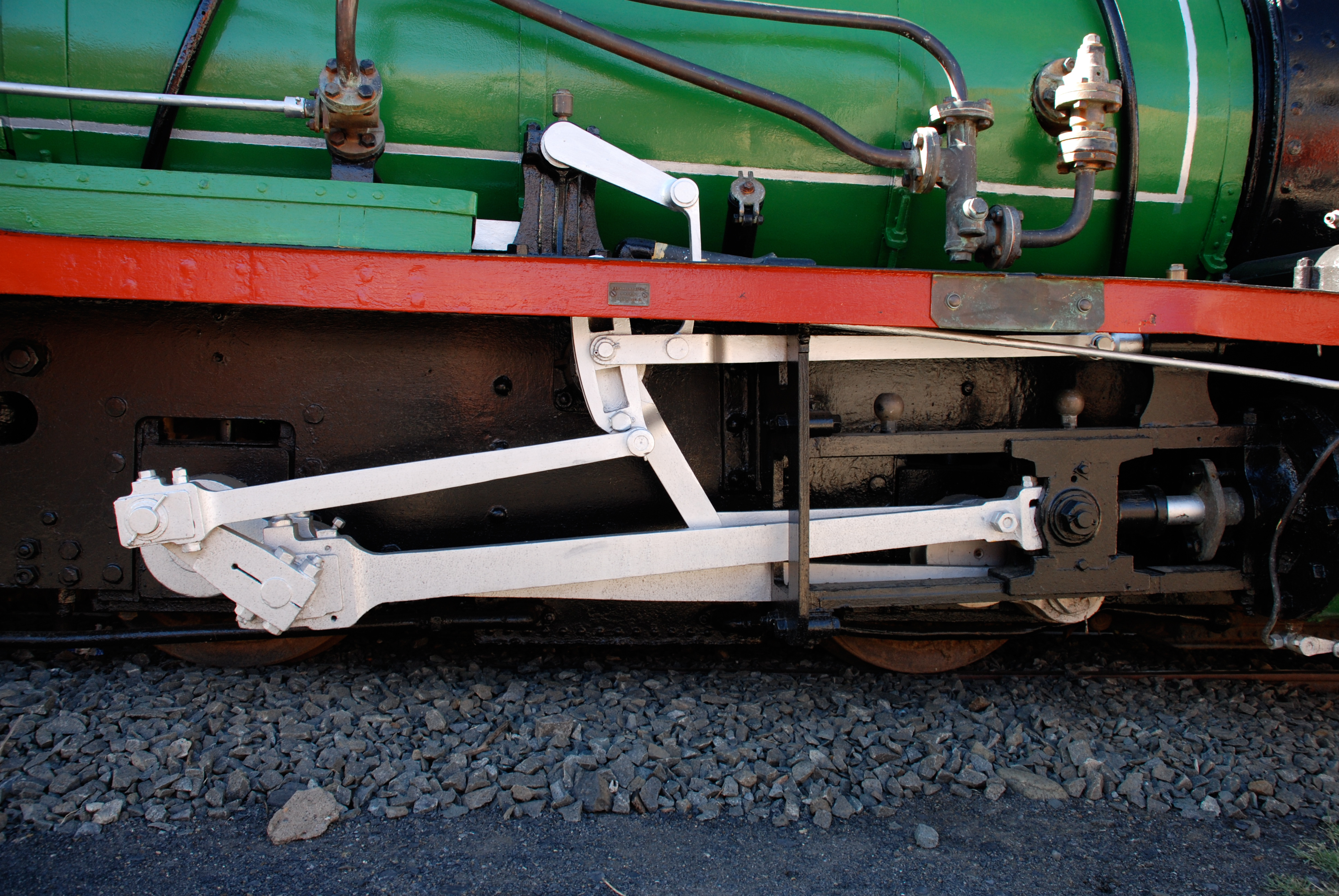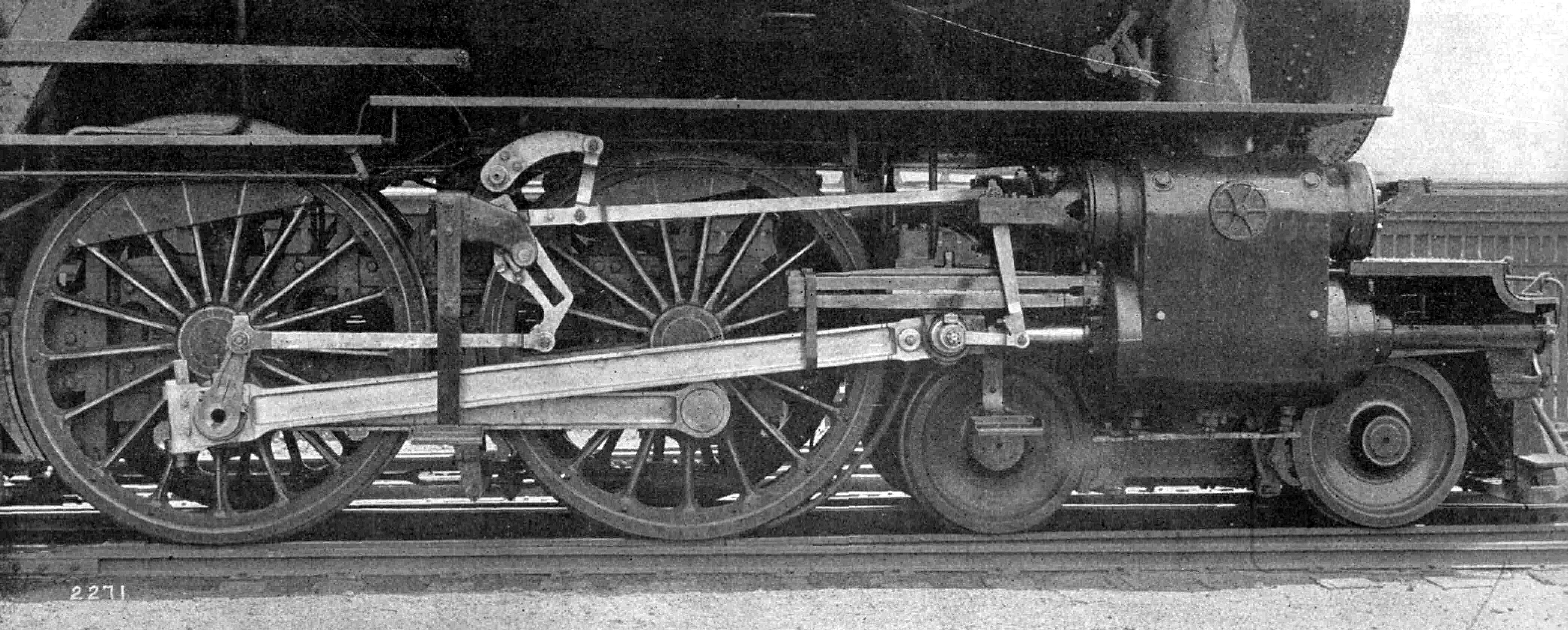|
Bagnall–Price Valve Gear
Bagnall–Price valve gear is a type of steam engine valve gear developed at locomotive manufacturer W.G. Bagnall W. G. Bagnall was a locomotive manufacturer from Stafford, England which was founded in 1875 and operated until it was taken over in 1962 by English Electric. History The company was founded in 1875 by William Gordon Bagnall. The majority of ... as an alternative to the more common Walschaerts valve gear and also to supersede the Baguley valve gear their designs had previously utilised. The gear was patented in 1903 by W.G. Bagnall and T. S. Price, the manager of the works. Layout The valves are driven from an eccentric cam mounted on one of the driving axles and linkage from the crosshead. The driving axle cam drives a ''rocking shaft'' that is mounted inside a cylindrical sleeve (known as the ''rocking shaft bush'') above the cylinder. A drop lever and connecting link from the crosshead oscillates the sleeve to control the lap and lead of the cylinder. ... [...More Info...] [...Related Items...] OR: [Wikipedia] [Google] [Baidu] |
Bagnall Price Valve Gear
Bagnall may refer to: * Bagnall, Michigan, and unincorporated community * Bagnall, Ontario, Canada * Bagnall, Staffordshire, England * Lansing Bagnall, British forklift truck manufacturing company * W. G. Bagnall, British locomotive manufacturing company * Bagnall Beach Observatory, astronomical observatory on the east coast of Australia People * Andrew Bagnall (born 1947), New Zealand motor racing driver * Anthony Bagnall (born 1945), Royal Air Force commander * Bill Bagnall (1926–2006), American magazine publisher and editor * Charles Bagnall (1827–1884), British Politician * Drew Bagnall (born 1983), Canadian ice hockey player * Geoff Bagnall (born 1965), Australian rugby league footballer * George Bagnall (1883–1964), British trade unionist * Gibbons Bagnall (1719–1800), English poetical writer * Graham Bagnall (1912–1986), New Zealand librarian, bibliographer and historian * Hamer Bagnall (1904–1974), English cricketer * James Bagnall (1783–1855), Canadian p ... [...More Info...] [...Related Items...] OR: [Wikipedia] [Google] [Baidu] |
Steam Engine
A steam engine is a heat engine that performs mechanical work using steam as its working fluid. The steam engine uses the force produced by steam pressure to push a piston back and forth inside a cylinder. This pushing force can be transformed, by a connecting rod and crank, into rotational force for work. The term "steam engine" is generally applied only to reciprocating engines as just described, not to the steam turbine. Steam engines are external combustion engines, where the working fluid is separated from the combustion products. The ideal thermodynamic cycle used to analyze this process is called the Rankine cycle. In general usage, the term ''steam engine'' can refer to either complete steam plants (including boilers etc.), such as railway steam locomotives and portable engines, or may refer to the piston or turbine machinery alone, as in the beam engine and stationary steam engine. Although steam-driven devices were known as early as the aeolipile in the f ... [...More Info...] [...Related Items...] OR: [Wikipedia] [Google] [Baidu] |
Valve Gear
The valve gear of a steam engine is the mechanism that operates the inlet and exhaust valves to admit steam into the cylinder and allow exhaust steam to escape, respectively, at the correct points in the cycle. It can also serve as a reversing gear. It is sometimes referred to as the "motion". Purpose In the simple case, this can be a relatively simple task as in the internal combustion engine in which the valves always open and close at the same points. This is not the ideal arrangement for a steam engine, though, because greatest power is achieved by keeping the inlet valve open throughout the power stroke (thus having full boiler pressure, minus transmission losses, against the piston throughout the stroke) while peak efficiency is achieved by only having the inlet valve open for a short time and then letting the steam expand in the cylinder (expansive working). The point at which steam stops being admitted to the cylinder is known as the '' cutoff'', and the optimal positio ... [...More Info...] [...Related Items...] OR: [Wikipedia] [Google] [Baidu] |
Walschaerts Valve Gear
The Walschaerts valve gear is a type of valve gear used to regulate the flow of steam to the pistons in steam locomotives, invented by Belgium, Belgian railway mechanical engineering, engineer Egide Walschaerts in 1844. The gear is sometimes named without the final "s", since it was incorrectly patented under that name. It was extensively used in steam locomotives from the late 19th century until the end of the steam era. History The Walschaerts valve gear was slow to gain popularity. The Stephenson valve gear remained the most commonly used valve gear on 19th-century locomotives. However, the Walschaerts valve gear had the advantage that it could be mounted entirely on the outside of the locomotives, leaving the space between the locomotive frame, frames clear and allowing easy access for service and adjustment, which resulted in it being adopted in some articulated locomotives. The first locomotive fitted with the Walschaerts valve gear was built at the Belgian Tubize worksh ... [...More Info...] [...Related Items...] OR: [Wikipedia] [Google] [Baidu] |
Baguley Valve Gear
The Baguley valve gear is a type of steam engine valve gear invented by Ernest E. Baguley, the Chief Draughtsman of the W.G. Bagnall company of locomotive manufacturers and patented in 1893. It was used by Bagnall during Baguley's time there, then by his own company of Baguley Cars Ltd. History The valve gear was invented by Ernest E. Baguley, the Chief Draughtsman of the W.G. Bagnall company of locomotive manufacturers and patented in 1893. A modified version was introduced in 1895 which eliminated a curved link. Following Baguley's departure from Bagnall's in 1901 that company developed the Bagnall–Price valve gear which was primarily based on Walschaerts valve gear. Baker identifies one common feature retained from Baguley in Bagnall–Price: "the application of the lap and lead motion by oscillating the expansion link (or sector) bodily, and thus superimposing this motion on the. normal die block travel, the lead remaining constant in all positions of the gear." Ba ... [...More Info...] [...Related Items...] OR: [Wikipedia] [Google] [Baidu] |
Locomotive Valve Gear
A locomotive or engine is a rail transport vehicle that provides the motive power for a train. If a locomotive is capable of carrying a payload, it is usually rather referred to as a multiple unit, motor coach, railcar or power car; the use of these self-propelled vehicles is increasingly common for passenger trains, but rare for freight (see CargoSprinter). Traditionally, locomotives pulled trains from the front. However, push-pull operation has become common, where the train may have a locomotive (or locomotives) at the front, at the rear, or at each end. Most recently railroads have begun adopting DPU or distributed power. The front may have one or two locomotives followed by a mid-train locomotive that is controlled remotely from the lead unit. __TOC__ Etymology The word ''locomotive'' originates from the Latin 'from a place', ablative of 'place', and the Medieval Latin 'causing motion', and is a shortened form of the term ''locomotive engine'', which was first us ... [...More Info...] [...Related Items...] OR: [Wikipedia] [Google] [Baidu] |





